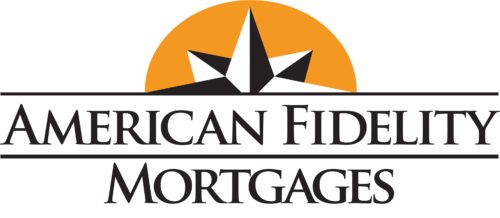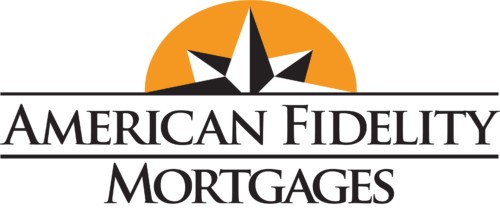Buying a home is one of the most significant financial decisions you will ever make, and securing the right mortgage is a crucial part of that process. A smart mortgage purchase ensures that you not only acquire your dream home but also set yourself up for long-term financial stability. Whether you are a first-time homebuyer or looking to upgrade, understanding the mortgage process and making informed choices can save you thousands of dollars over the years.
Understanding Mortgage Basics
A mortgage is a loan used to purchase a home, with the property itself serving as collateral. Mortgages typically come with different interest rates, terms, and payment options, making it essential to choose the right one based on your financial situation and future goals.
The key components of a mortgage include:
- Loan Principal: The amount you borrow to purchase the home.
- Interest Rate: The cost of borrowing money, which can be fixed or variable.
- Loan Term: The duration of the mortgage, commonly 15, 20, or 30 years.
- Down Payment: The upfront payment you make, usually a percentage of the home price.
- Monthly Payment: Includes principal, interest, taxes, and insurance (PITI).
Steps to a Smart Mortgage Purchase
1. Assess Your Financial Readiness
Before diving into homeownership, evaluate your financial health. Consider your income, expenses, savings, and existing debts. Lenders typically look at your credit score, debt-to-income (DTI) ratio, and savings to determine your mortgage eligibility.
- Credit Score: A higher credit score leads to better interest rates. Aim for a score of at least 700 for competitive mortgage terms.
- DTI Ratio: Lenders prefer a DTI below 43%, meaning your total debt payments shouldn’t exceed 43% of your gross monthly income.
- Emergency Savings: Ensure you have at least 3–6 months’ worth of living expenses in savings.
2. Set a Realistic Budget
Determine how much house you can afford by considering not just the mortgage payment but also property taxes, homeowners insurance, maintenance costs, and utility bills. Online mortgage calculators can help estimate your monthly payments.
3. Save for a Down Payment and Closing Costs
A higher down payment reduces your loan amount and monthly payments. Conventional loans often require 20% down, but there are options for as low as 3–5% down with private mortgage insurance (PMI). Additionally, set aside funds for closing costs, which typically range from 2% to 5% of the home price.
4. Shop for the Best Mortgage Rates
Interest rates can vary significantly between lenders, so it’s essential to compare multiple loan offers. Obtain loan estimates from at least three lenders and compare factors such as:
- Interest Rate: Lower rates save you money over the loan term.
- Loan Term: A shorter term (15 or 20 years) leads to less interest paid overall.
- Fixed vs. Adjustable Rates: Fixed rates offer stability, while adjustable-rate mortgages (ARMs) may have lower initial rates but fluctuate over time.
5. Get Pre-Approved for a Mortgage
A pre-approval letter from a lender strengthens your offer when bidding on a home. It shows sellers that you are financially prepared and speeds up the closing process. The pre-approval process involves:
- Submitting financial documents (pay stubs, tax returns, bank statements)
- A credit check
- Verification of employment and assets
6. Choose the Right Mortgage Type
There are several types of mortgages available, each with different benefits:
- Conventional Loans: Ideal for borrowers with strong credit and a stable income.
- FHA Loans: Require lower down payments (as low as 3.5%) and are suitable for first-time buyers.
- VA Loans: Available to eligible veterans and military members with no down payment required.
- USDA Loans: Designed for rural homebuyers with low to moderate income.
7. Lock in Your Interest Rate
Once you find a favorable rate, consider locking it in to protect yourself from potential increases. Rate locks typically last 30–60 days and can help you secure predictable monthly payments.
8. Understand Mortgage Terms and Fees
Read the fine print before signing a mortgage agreement. Look out for:
- Origination Fees: Charged by lenders for processing your loan.
- Discount Points: Optional fees paid upfront to lower your interest rate.
- Prepayment Penalties: Some lenders charge fees if you pay off your loan early.
Common Mortgage Mistakes to Avoid
Many homebuyers make mistakes that can lead to financial strain. Avoid these pitfalls:
- Overextending Your Budget: Just because you qualify for a higher loan amount doesn’t mean you should borrow it all.
- Skipping Mortgage Rate Comparisons: A small difference in interest rates can mean thousands of dollars in savings over time.
- Ignoring Additional Homeownership Costs: Maintenance, repairs, and property taxes add up.
- Making Big Financial Changes Before Closing: Avoid taking on new debt (e.g., car loans or credit cards) before closing, as it can impact your mortgage approval.
The Role of Mortgage Refinancing
If market conditions change or your financial situation improves, you may want to consider refinancing your mortgage. Refinancing allows you to:
- Secure a lower interest rate
- Shorten your loan term
- Switch from an adjustable-rate to a fixed-rate mortgage
- Tap into home equity for renovations or debt consolidation
Preparing for a Smooth Closing
Once your mortgage is approved, the closing process begins. This involves:
- Home Appraisal: Determines the property’s market value.
- Home Inspection: Identifies potential issues before finalizing the purchase.
- Title Search & Insurance: Ensures there are no legal claims against the property.
- Final Walkthrough: A last check to confirm the home’s condition before closing.
- Closing Day: You’ll sign the mortgage documents, pay closing costs, and receive the keys to your new home.
Conclusion
A smart mortgage purchase requires careful planning, thorough research, and a clear understanding of your financial capabilities. By assessing your readiness, comparing loan options, and working with reputable lenders, you can secure a mortgage that aligns with your long-term goals. Taking a strategic approach not only makes homeownership more affordable but also ensures financial stability in the years ahead. Whether you’re a first-time buyer or a seasoned homeowner, making informed mortgage decisions will set you on the path to owning your dream home wisely.


